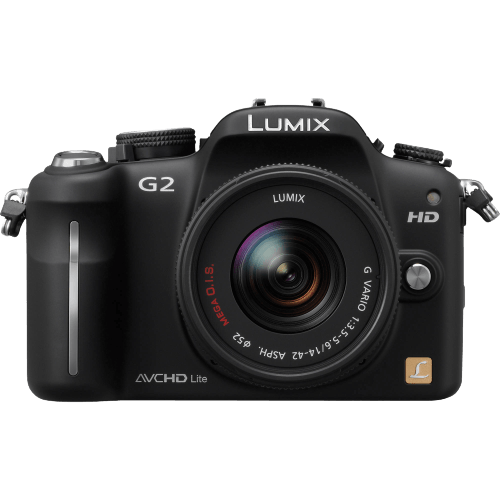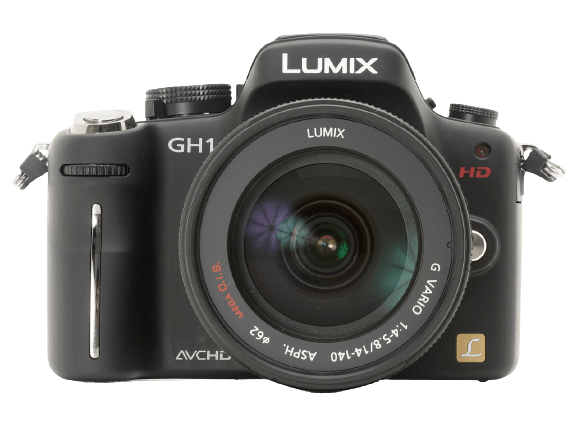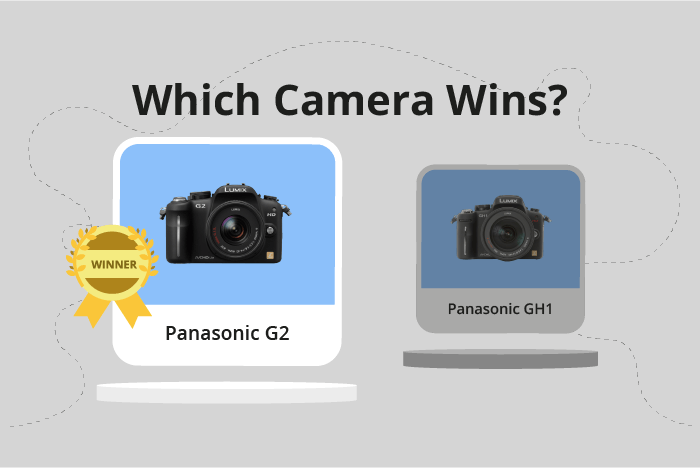Panasonic Lumix DMC G2 vs Lumix DMC GH1 Comparison
Panasonic Lumix DMC G2

Panasonic Lumix DMC GH1

The Panasonic Lumix DMC G2 outperforms the Panasonic Lumix DMC GH1 by a small margin, scoring 44/100 compared to the GH1’s 42/100. Both cameras are mirrorless and were released in 2010 and 2009, respectively. They share similar dimensions, with the G2 measuring 124 x 84 x 74mm and the GH1 at 124 x 90 x 45mm.
The G2 has a slight advantage in terms of weight, being heavier at 428g compared to the GH1’s 385g. This extra weight could provide more stability during shooting. The G2 also had a lower launch price of $599, making it more affordable than the GH1’s $880 price tag.
The GH1, on the other hand, is slightly lighter and more compact, which may be preferable for some users who prioritize portability. However, the difference in scores and specifications between these two cameras is minimal, and both can serve as reliable options for photographers. The choice ultimately depends on individual preferences and priorities.
Panasonic Lumix DMC G2 vs Lumix DMC GH1 Overview and Optics
The Panasonic Lumix DMC GH1 wins in the optics comparison with a score of 47/100, while the Panasonic Lumix DMC G2 scores 44/100. Both cameras share several specifications, including 12.1 megapixels, a CMOS sensor, Micro Four Thirds sensor size, Micro 4/3 lens mount, and image stabilization.
The GH1 outperforms the G2 in a few key areas. First, it has a faster shooting speed of 3 compared to the G2’s 2.6. This means that the GH1 can capture images more quickly, which is beneficial for action shots. Second, the GH1 has a higher DXOMARK score for its sensor, scoring 64 compared to the G2’s 53. This indicates that the GH1’s sensor performs better in terms of image quality, dynamic range, and low-light performance.
On the other hand, the G2 has an advantage in its processor, the Venus Engine HD II, which is an upgraded version of the Venus Engine HD found in the GH1. This newer processor may offer better image processing and overall performance. However, this advantage is not enough to outweigh the benefits of the GH1’s faster shooting speed and better sensor performance.
In comparing the optics of the Panasonic Lumix DMC G2 and the Panasonic Lumix DMC GH1, it is clear that the GH1 is the superior camera. Its faster shooting speed and higher DXOMARK sensor score contribute to its higher overall optics score, making it the better choice for photographers seeking quality and performance. Although the G2 has an upgraded processor, it does not compensate for its shortcomings in other areas, solidifying the GH1 as the winner in this comparison.
Panasonic Lumix DMC G2 vs Lumix DMC GH1 Video Performance
The Panasonic Lumix DMC GH1 comes out on top in terms of video capabilities, scoring 56/100 as opposed to the Panasonic Lumix DMC G2’s 47/100. Both cameras share some common specifications, such as a maximum video frame rate of 60fps and neither having built-in time-lapse functionality.
The GH1’s superiority in video performance is evident in its maximum video resolution and dimensions. The GH1 offers Full HD resolution with video dimensions of 1920 x 1080, providing a higher level of detail and clarity in the recorded footage. This makes the GH1 a better choice for users who prioritize video quality in their camera selection.
On the other hand, the G2’s video capabilities are limited to Standard HD resolution with video dimensions of 1280 x 720. While this is still sufficient for casual video recording, it falls short in comparison to the GH1’s Full HD capabilities. Nonetheless, the G2 may still be a suitable choice for users who do not require high-resolution video output.
In comparing the video capabilities of the Panasonic Lumix DMC G2 and the Panasonic Lumix DMC GH1, it is apparent that the GH1 is the superior choice for those prioritizing video performance. Its Full HD resolution and larger video dimensions offer a higher level of detail and clarity in recorded footage. The G2, while still providing adequate video quality for casual users, does not match the GH1’s performance in this aspect.
Panasonic Lumix DMC G2 vs Lumix DMC GH1 Features and Benefits
The Panasonic Lumix DMC G2 wins the features comparison with a score of 49/100, while the Panasonic Lumix DMC GH1 scores 36/100. Both cameras share several specifications, such as a 3-inch screen size, 460,000-dot screen resolution, flip screen, and lack of GPS, WIFI, and Bluetooth capabilities.
The G2 outperforms the GH1 in one significant aspect: the presence of a touchscreen. This feature allows users to navigate menus, control settings, and focus on subjects with ease and speed. The touchscreen enhances the user experience and provides an additional level of convenience when compared to the GH1.
On the other hand, the GH1 does not have any features that are superior to the G2. Both cameras have the same screen size and resolution, flip screen, and lack of GPS, WIFI, and Bluetooth. This means that the GH1 does not offer any advantages over the G2 in terms of features.
Considering the common features and the G2’s touchscreen advantage, the Panasonic Lumix DMC G2 is the better camera in this comparison. The touchscreen sets it apart from the GH1, providing a more convenient and efficient user experience. The GH1, with no standout features, falls short when compared to the G2. Therefore, the Panasonic Lumix DMC G2 is the recommended choice for those seeking a camera with superior features.
Panasonic Lumix DMC G2 vs Lumix DMC GH1 Storage and Battery
The Panasonic Lumix DMC G2 and Panasonic Lumix DMC GH1 tie in storage and battery, both scoring 21/100. They share similarities in storage options, with each camera having one memory card slot and accepting SD and SDHC cards. However, the G2 also accepts SDXC cards, giving it an advantage in terms of storage capacity.
When comparing battery life, the G2 slightly outperforms the GH1, offering 330 shots per charge, as opposed to the GH1’s 320 shots. The G2 uses a DMW-BLB13PP battery, while the GH1 uses a DMW-BLB13 battery. Neither camera offers USB charging.
Although the G2 has a slight edge in battery life and storage capacity, the difference is minimal, and both cameras have nearly identical storage and battery performance. The G2’s ability to accept SDXC cards may be beneficial for some users, but overall, the two cameras are evenly matched in this category.
Panasonic Lumix DMC G2 vs Lumix DMC GH1 – Our Verdict
Are you still undecided about which camera is right for you? Have a look at these popular comparisons that feature the Panasonic Lumix DMC G2 or the Panasonic Lumix DMC GH1:

